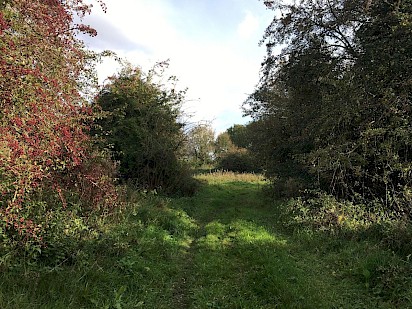How London plans to 'rewild' the city
 Until this spring, there hadn’t been any beavers living in London for 400 years. But a pair of the animals (named “Justin Beaver” and “Sigourney Beaver”) were released at a site in the northern part of the city in March, where the local council wants to help rebuild biodiversity. Nearby, over the last two years, volunteers have planted 100,000 trees on the site of an ancient woodland, aiming to capture CO2 and help reduce the risk of flooding for homes in the area. Others have been working for years to restore the Thames River, which was once declared biologically dead but now has increasing populations of animals like seals and seahorses.
Until this spring, there hadn’t been any beavers living in London for 400 years. But a pair of the animals (named “Justin Beaver” and “Sigourney Beaver”) were released at a site in the northern part of the city in March, where the local council wants to help rebuild biodiversity. Nearby, over the last two years, volunteers have planted 100,000 trees on the site of an ancient woodland, aiming to capture CO2 and help reduce the risk of flooding for homes in the area. Others have been working for years to restore the Thames River, which was once declared biologically dead but now has increasing populations of animals like seals and seahorses.
A group of conservation experts is now beginning to work on a larger plan for “rewilding” across the entire city of nine million people. In key areas around the edges of the city, partners that include local government agencies will restore marshes, wetlands, and native forests. Park managers are already beginning to restore nature in city parks. “Nature corridors” next to canals and train lines will help give wildlife a path to travel from one area to another. And city officials will encourage Londoners to help rebuild biodiversity in their own gardens and on green roofs.
“The natural fabric in this country has become very, very depleted,” says Ben Goldsmith, a financier and environmentalist who pitched the idea of a city-wide rewilding project to London mayor Sadiq Khan at the global climate summit in Glasgow last year. “Even in the last 30 years, there have been unbelievable declines in some of the most basic species. The cuckoo, which heralds the English summer, is down by 90% in my lifetime. We’ve lost so much. And so inevitably, if you’re a nature lover, you end up being an environmentalist.”
A team of rewilding experts, along with parks officials and others from the government, will spend the next year and a half drawing up plans for the city. The city committed £600,000 ($748,000) to a Rewild London fund that will help restore 20 to 30 sites across London, with advice from the London Wildlife Trust. One project, for example, will create habitat for pollinators along a bike trail. Another will test using recycled building materials to support butterflies. A project called “Get inVOLEd” is reintroducing water voles to a local river, and tracking them with cameras and bioacoustic recording devices. Another will reintroduce large grazing animals at three site to help restore habitat. Several other projects are also underway.
Goldsmith, who is also working on restoration projects in the English countryside, learned about the concept of rewilding from books like George Monbiot’s Feral and the writings of the conservation expert Paul Jepsen. “He presented a vision of a world that isn’t just less bad than it could be, but it’s actually much better than I had previously imagined,” Goldsmith says. “The idea of rewilding is about restoring natural processes that have been absent in a place like England for centuries. That is a profoundly optimistic vision.”
While restoration can happen at a broader scale in rural areas—and some people argue that some of the space currently used for farming could be transformed—it also makes sense even inside dense cities. “If you take into account private gardens, parks, and so on, probably 40 to 50% of the area of Greater London is green,” Goldsmith says. “So there’s a lot of space, which means we have this blank canvas on which we can restore nature.” There are also hundreds of hectares of flat roofs that could be planted to become green roofs, he says. Architectural choices can also help: Bricks, for example, can be designed to double as nesting sites for birds. Wild West End, a project that started in 2015, works with property developers to add green roofs and walls and other pockets of habitat to buildings. Rewild My Street, a local organization, gives residents tips for supporting wildlife in their backyards and creating neighborhood pocket parks or micro forests.
Restoring nature can give cities multiple benefits, and other cities also have large-scale projects underway. Los Angeles is building a wildlife crossing over an eight-lane freeway to help connect mountain lion habitats. Seoul is planting urban forests to help improve air quality and reduce the urban “heat island” effect. Paris is planting a series of small urban forests as part of its climate strategy. In Oslo, restoring urban forests is part of a broader plan to become carbon neutral by the end of the decade.
Studies have also repeatedly documented the social benefits of having more access to nature in cities, including a correlation between access to nature and happiness. “This is also about social justice,” says Goldsmith. “One of the inequities that was so starkly exposed during the COVID era is that of access to nature… . and for many communities in central London, they don’t have it.”
Rewilding projects are already happening in London, but Goldsmith says they “want to turbocharge that work.”
You can return to the main Market News page, or press the Back button on your browser.

